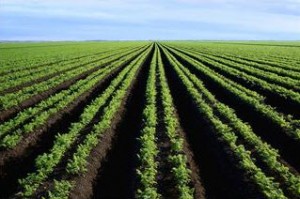 Every year, the Environmental Working Group tests fruits and vegetables to determine which are the most — and least — contaminated with pesticides. If you’ve been a subscriber from the beginning, I have shared the previous results with you.
Every year, the Environmental Working Group tests fruits and vegetables to determine which are the most — and least — contaminated with pesticides. If you’ve been a subscriber from the beginning, I have shared the previous results with you.
But the list can and does change over time and as we find ourselves in the height of summer here in New England, with fresh produce all around, I want to share the 2012 results to help you make better fruit and vegetable choices.
Let’s start with the good news! The following made the Clean 15 list, which means they were the cleanest and least pesticide-laden of the crops. This list is important because if you are watching your pennies and trying to determine when you can afford to buy — or whether you should splurge on — organic produce, these items can typically be purchased conventionally grown and still be ok to eat.
While local is always better since the nutrient levels will be higher because they are fresher from farm to table, you can still pick these up in any market and not worry about spending the extra money on organic.
The Clean 15 includes:
- Onions
- Sweet corn
- Pineapples
- Avocado
- Cabbage
- Sweet peas
- Asparagus
- Mangoes
- Eggplant
- Kiwi
- Domestic Cantaloupe
- Sweet potatoes
- Grapefruit
- Watermelon
- Mushrooms
One important note, however. Corn in this country is very often genetically modified, and not usually labeled as such in stores. So if you are concerned about consuming GMOs as I am, then buying organic corn is essential.
Now for the worst offenders. These are the most pesticide-ridden fruits and vegetables on the market, and some of them contain as many as 57 different pesticide residues. When you are looking to buy any of these for your family, this is when you should definitely consider splurging on organic versions.
The Dirty Dozen
- Apples
- Celery
- Sweet Bell Peppers
- Peaches
- Strawberries
- Imported Nectarines
- Grapes
- Spinach
- Lettuce
- Cucumbers
- Domestic Blueberries
- Potatoes
It is important to note that many of these are staples in growing kids’ diets, so reducing the amount of pesticide exposure by buying organic is an investment in future health well worth making. Thankfully, Trader Joe’s keeps us stocked on the organic apples, strawberries, potatoes and grapes my kids rely on. Hopefully, you can find organic versions nearby in Trader Joe’s, Whole Foods or at your local market.
If not, ask your local farmers how they raise their produce. Many small farms follow organic practices but have not gone through time consuming (and expensive for a small farm) practice of becoming certified as organic. Ask the farmers at your local farmer’s market about their practices: farmers following organic practices will be excited to tell you about it.
In 2012, the Dirty Dozen also included a special category, citing two crops that didn’t make the top twelve offenders but posed other health concerns. These vegetables, green beans and leafy greens such as kale and collard greens, were commonly found to be contaminated with a highly toxic organophosphate insecticide that has been shown to be toxic to the nervous system.
While the insecticide is not used frequently any more, it has not been banned, so it is still allowed on food crops and green beans and leafy greens were often found to contain this pesticide. For this reason, these items should always be purchased organic. And always wash your produce, whether it is conventional or organic. Soaking in a citrus veggie wash or a bath of baking soda and a little vinegar will help remove residues that remain on the skin.
Keep in mind that products made from these crops will also contain the pesticide residues, so if you buy any pre-made product containing that fruit or vegetable, you will want to buy organic as well. This is especially true for the products kids so enjoy such as juices and jellies.
Lastly, if you enjoy grapes or grape products, there is an added concern: grape growers in the US use a fluoride-based spray and grape juices, jellies and yes, even California wines, were found to have excessive fluoride contaminant levels. Fluoride may be fine on top of your teeth but is not meant to be ingested (just read the warning on young kids’ toothpaste boxes).
Because many of us already consume excessive amounts through our water supply if you don’t have a water filter on all your faucets, this is something we really need to try to avoid. So look for organic versions of these products whenever possible. (European wine makers do not use this fluoride-based spray and so do not have the same concern).
If you want to see the list see the Environmental Working Group website. They also offer a
downloadable version for your phone, or if you make a donation to
help support their work, they will send you a pocked guide you can keep in your
wallet.
Author: Inger Pols is the Editor of the New England Health Advisory and Author/Creator, Finally Make It Happen, the proven process to get what you want. Get a free special report on The Truth About Sugar: It’s Not All Equal at www.IngerPols.com
Photo Source: Microsoft Clip Art



 Follow me on Twitter
Follow me on Twitter